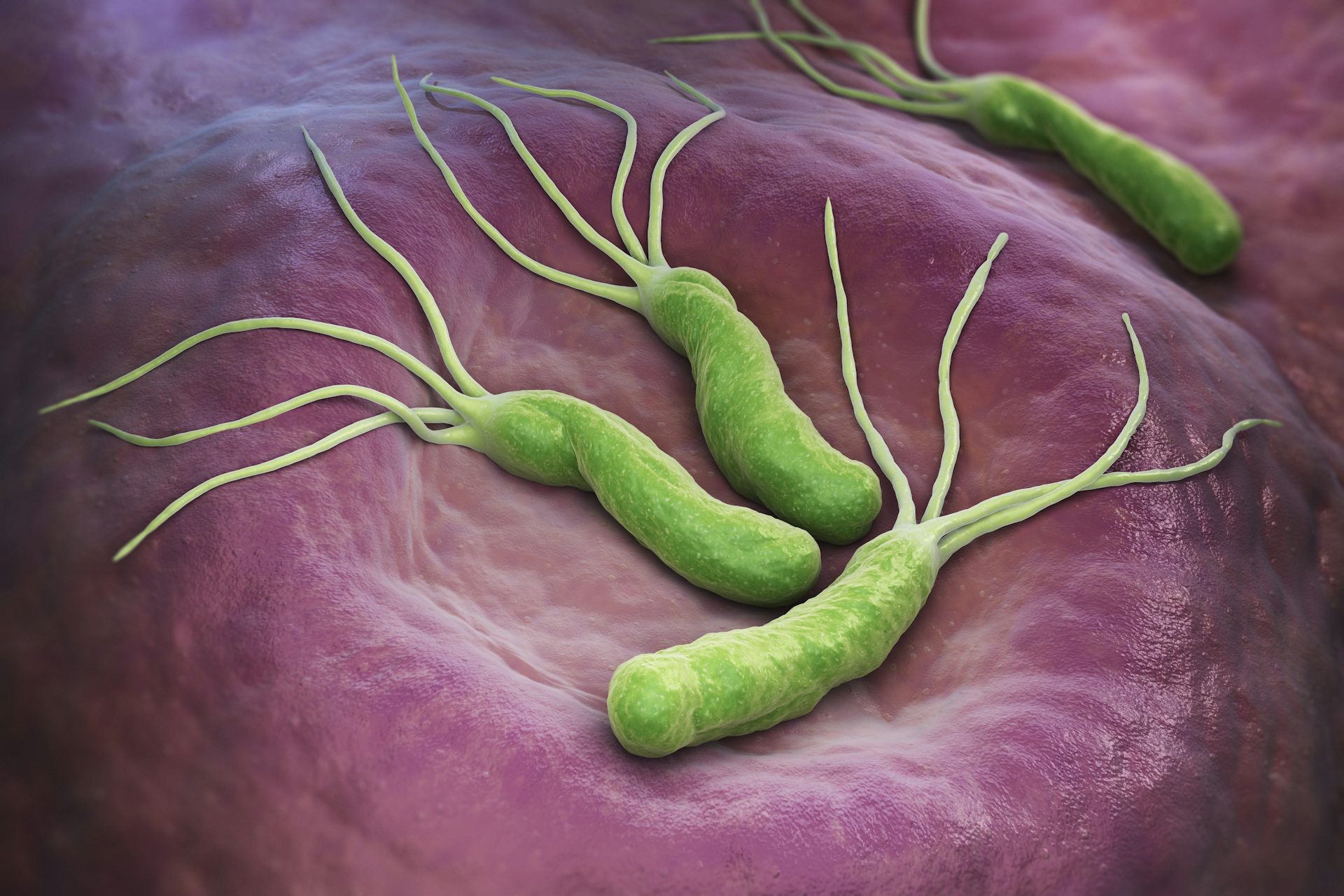
The spread of Helicobacter Pylori (H.pylori) has been flagged as a public health concern in Nairobi due to poor urban sanitation and access to clean water. It’s a concern because it’s contagious, is present in the city’s water systems and is hard to treat. If left untreated, it can cause inflammation and even lead to cancer. Kimang’a Nyerere explains what H.pylori is and what needs to be done to better manage infection rates.
What is H.pylori and what are the dangers of having it? What does it do in one’s stomach?
H.pylori is a type of bacteria that interferes with the process controlling how much acid is in the stomach.
It can cause a heavy acid load which leads to many issues including inflammation of the stomach lining (gastritis) and ulcers in the duodenum (the first part of the small intestine). It can even damage the stomach’s protective mucus layer, allowing certain cancers to develop.
In general, patients infected with H.pylori don’t have any obvious symptoms. Signs may include an ache or burning pain in the abdomen – particularly when your stomach’s empty – nausea, loss of appetite, frequent burping, bloating and unintentional weight loss.
How do people catch it and how prevalent is it in Kenya? How does this compare to other countries in the region?
People usually catch it from another person (through saliva) or if they eat food or drink water that’s contaminated with faeces.
In 2016 my colleagues and I investigated the presence of H.pylori in the water of the Nairobi River basin, which has three major rivers – Ngong, Nairobi and Mathare. Currently about 56% of the city’s residents live in highly congested informal and middle class settlements along the Nairobi River banks. The river is very polluted by garbage, human waste, industrial waste (including agrochemicals, petrochemicals and metals) and overflowing sewers.
This was evident in our tests. There was a high presence of faecal bacteria in the water samples and H.pylori was detected in two of the nine domestic wells sampled and one out of four rivers sampled. This finding is significant considering H.pylori is a serious pathogen that’s categorised as a “definite” carcinogen by the World Health Organisation.
The presence of H.pylori can be attributed to a lack of sanitation. We found that 90% of the people who lived in the areas where H.pylori was detected didn’t have toilets connected to the main sewerage system. They mostly used long-drops or defecated openly.
This is worrying because as Nairobi’s population continues to grow, if sanitation issues aren’t resolved, the risk of spread will increase.
Studies in Kenya have put the prevalence of H.pylori at about 67.5% in all age groups. Though this might seem high, some African countries have shown higher infection rates: 91.7% in Egypt, 97% in The Gambia and 75.4% in Ghana. This is almost twice as high as the average rates in developed countries of 34.7%.
What can be done to treat it and reduce the risk of infection?
Those infected can be treated with antibiotics. Treatment is quite intensive and usually involves more than one antibiotic and antacids over a period of up to 10 days. Because it’s contagious, treating it properly is key to preventing the bacteria’s spread.
Unfortunately, treatment failures are frequently reported. That’s usually because people haven’t taken the medication properly, though there are also cases where the bacteria has become resistant to some of the drugs.
The treatment regime – which drugs are selected, the number and doses of medications used in a combination, dosing frequency, and treatment duration – is crucial in H.pylori eradication.
My colleagues and I recently investigated the effectiveness of a 10-day sequential therapy compared with the standard 10-day triple therapy for treatment of H. pylori infection in children.
Sequential treatment consists of four different medications given over a 10-day treatment in which a proton pump inhibitor (a drug that helps reduce stomach acid production), and amoxicillin (an antibiotic) is given for five days. This is followed by an inhibitor and a combination of two other antibiotics for another five days. Triple therapy consists of two antibiotics and a proton pump inhibitor running over a course of 10 days.
We saw a significant difference in H.pylori eradication between the two regimens. Patients on the 10-day sequential therapy had a much higher H.pylori eradication rate than patients who received conventional treatment: 84.6% versus 48.8%, respectively. This is in line with other studies that show the same.
Kenya should also consider using a test-and-treat strategy. In this approach groups of people who are thought to be at high risk are tested and those who test positive are given treatment. In other countries this strategy has had tremendous success in reducing infection rates.
A test-treat strategy won’t need much to roll out as it only needs a stool sample and a rapid five-minute test. It can be done in any health centre.
Aside from this, because H.pylori is primarily spread through contaminated food and water, it’s important that people have good hygiene practices and access to safe water drinking water. Most of Nairobi’s residents aren’t connected to the city’s sewage system or piped water. They are supplied water – that hasn’t been treated – from groundwater aquifers through private water vendors or private wells. This likely plays a big role in the spread of H.pylori.![]()
Kimang’a Nyerere, Microbiology Lecturer, Jomo Kenyatta University of Agriculture and Technology
This article is republished from The Conversation under a Creative Commons license.

